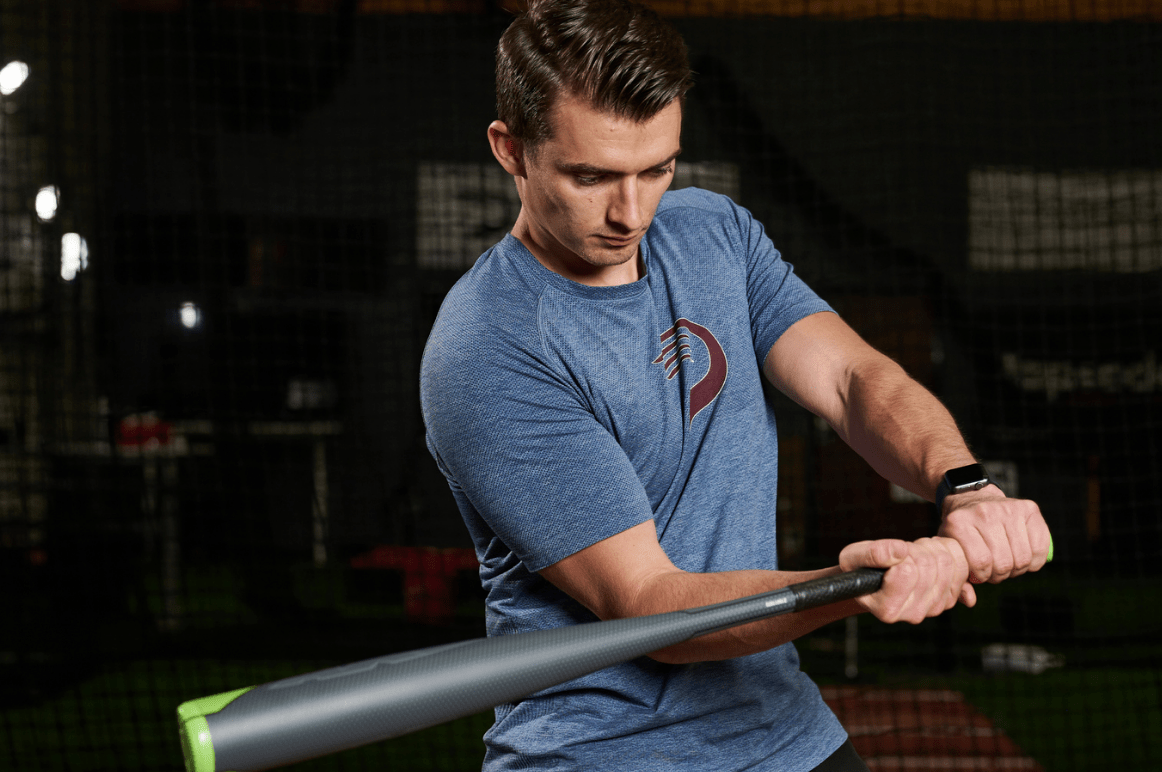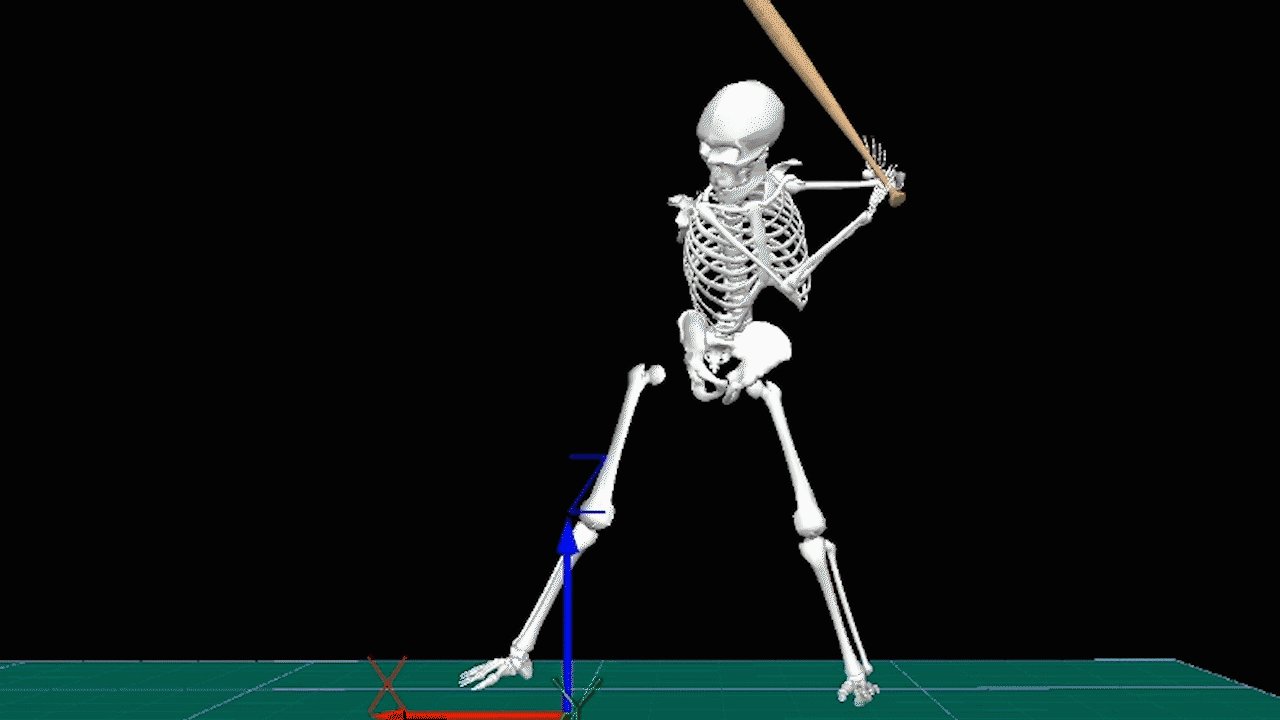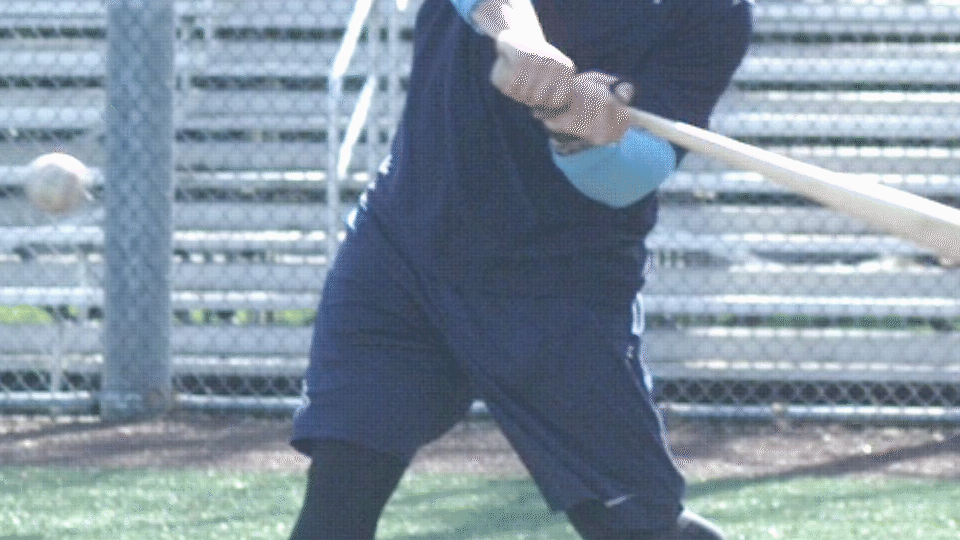Bat Fitting: The Physics of Choosing a Bat

As hitters, we can often assess and address an area of weakness in our swing. However, we rarely perform a similar assessment on our equipment to see if it is either improving our swing or amplifying our swing flaws. As of right now, many of us choose our bat based on what “feels” the best.
If we get a little scientific, we can begin to develop a hypothesis as to what bat might best suit our unique swing characteristics. It’s possible that the right bat could positively influence our batted ball statistics. Given how difficult hitting is, it’s worth investigating anything that can give us a boost in the box.

Foundations of Hitting
30 modules teaching you everything we know about hitting and hitting mechanics.
Key terms
If I’m a college or high school athlete, will every 33in 30oz bat I pick up be the exact same? Of course not. We will focus primarily on the difference in each bat’s “Moment of Inertia”, or MOI.
What is MOI?
Moment of Inertia: A quantity expressing a body’s tendency to resist angular acceleration.
This is a measurement of how difficult it is to change the rotational velocity of an object that is rotating around a “pivot point”. In baseball, the industry standard for measuring MOI starts with a pivot point six inches above the knob. Six inches is significant because this is roughly where most hitters’ grips will end.
A bat’s MOI will tell us where the majority of the weight is situated on the bat. The two overload Axe Bat Speed Trainers are a perfect example for this.
If you were to put a 33 inch version of both the barrel-loaded and handle-loaded bat speed trainers on a scale, they would both display the same weight: 36 oz. Upon picking up and swinging each bat, however, you’d quickly notice that swinging the barrel load is much more difficult than swinging the handle load. The reason is that these bats have very different MOI values.
As weight is distributed towards the end cap of a bat, the MOI goes up. If weight is distributed down towards the handle, the MOI goes down. This means it will require much less force to rotate a bat with a lower MOI around a pivot point.
That might make immediate sense to you, but if you’d like to get a feel for it, grab a bat and take two swings, one with your hands in the usual position on the grip and the other holding the barrel. Which required more effort?
How will different bats affect my swing?
Now we need to answer the question, “How might the difference in MOIs affect my swing or outcomes?” If you’ve ever swung the Axe Bat Speed Trainers, I’m sure you’ve noticed the differences between the two. The barrel-loaded trainer requires more force, making it much more difficult to rotate, resulting in slower bat speeds. Additionally, the higher MOI makes the barrel load more difficult to manipulate and adjust.
On the handle-loaded bat speed trainer, the extra weight is closer to the body’s midline. This weight distribution is in a much more adjustable position, which allows us to rotate the bat at greater velocities.
Figure skaters are a great example of this concept. If you’ve ever seen a figure skater spinning on the ice, they bring their limbs tighter into a more proximal position (close to the body) in order to spin faster.
When trying to slow down their spin, they move their limbs from a proximal to a distal (away from the body) position, moving the weight farther from their midline. This same idea holds true for MOI in the bats we decided to use: the closer the weight is to the body, the easier it will be to swing the bat faster.
Assuming the concept above, using a bat with a lower MOI will allow you to rotate the bat faster, increase your bat speed, and decrease your time to contact, letting you make decisions later in the swing. A lower MOI bat will also produce increased bat to ball skills (smash factor). Because that weight is closer to the hands, we should be able to adjust and manipulate the bat much easier.
The opposite is true for a bat with a higher MOI. Because the weight is further away from the hands, it is now in a position that makes it more difficult to rotate the barrel at faster velocities, in turn decreasing bat speed. This end-loaded weight distribution also makes it more difficult to manipulate the barrel and adjust during the swing.
However, the fact that you can swing a bat with a lower MOI faster than a bat with a higher MOI does not mean you will be hitting the ball harder.
Let’s consider Newton’s 2nd law: “Force equals mass times acceleration” (F=ma). Removing mass from the barrel will decrease a bat’s MOI and increase bat speed (acceleration). However, the loss of mass has a significant effect of its own, often resulting in less force being transferred from the bat into the ball, and ultimately lower exit velocities. To simplify, in order to take advantage of the exit velocity benefits from adding bat speed to your swing, you would need to make those bat speed gains while swinging a bat with the same or similar MOI.

Become the Hitter You Want To Be
Train at Driveline
The Future of Bat Fitting
One begins to wonder if baseball will eventually follow golf’s lead as far as “fitting” the athlete with equipment based on their unique swing characteristics. Consider an athlete with an abnormally high whiff rate, but high peak exit velocity. This athlete is more than likely using a bat with a relatively high MOI. The higher MOI makes it more difficult to adjust during the swing, which could contribute to the high whiff rate.
That said, when the barrel does meet the ball, the position of mass in the barrel results in impressively high exit velocity. In theory, switching to a bat with a lower MOI could decrease this athlete’s whiff rate and improve their barrel percentage. However, this would come at the cost of slightly lowering their peak exit velocity.
On the opposite end of the spectrum, an athlete with impressive bat to ball skills who rarely swings and misses but shows abnormally low exit velocities might benefit from using a bat with a slightly higher MOI. This athlete has a little more room to swing and miss. But with a higher MOI bat, his batted balls will have increased exit velocity and become more valuable.
Another idea stemming from golf is to let the situation dictate the equipment. A golfer holds fourteen clubs in their bag, meaning that, given the situation, there are fourteen different implements to choose from to maximize the opportunity at success. In the future, if we are able to develop correlations from a bat’s MOI to its batted ball characteristics, you might actually see hitters swinging different bats in different situations.
For example, it’s a tie ball game, bottom of the 9th, runner on 3rd, less than 2 outs, and the infield is playing in. The goal is very clear: get the runner home and you win the game. If a player produces a higher average launch angle while using a bat with a higher MOI compared to a bat with a lower MOI, then a higher MOI bat would be a good choice here.
This is just one example of many, considering what we know already. To give another example, as mentioned above, a lower MOI bat would improve a hitter’s bat speed, thus decreasing time to contact. If this hitter were facing a high velocity pitcher, the decreased time to contact and added adjustability would benefit the hitter.
The hope is that in the future we will follow golf’s lead and use a hitter’s unique swing characteristics to hone in on the most optimal bat recommendations.
Train at Driveline
Interested in training with us? (In-gym and remote options are both available.)
- Athlete Questionnaire: Fill out with this link
- Email: [email protected]
- Phone: 425-523-4030
Written by Richard Prigatano – Hitting Trainer
Comment section